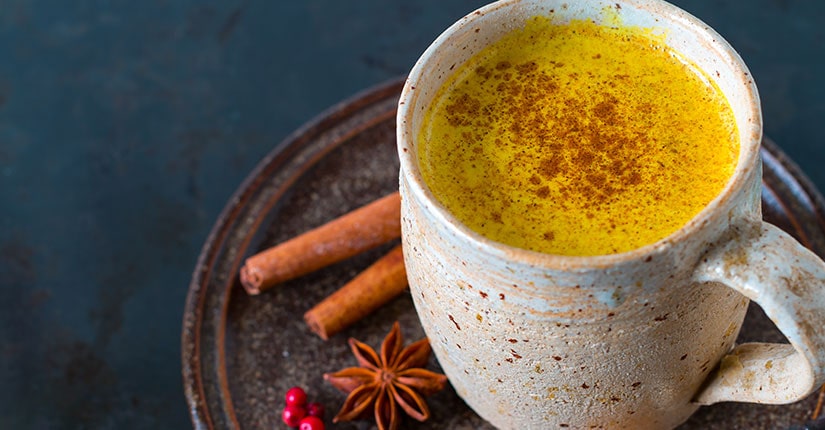How complete nutrition can be achieved from Indian meals
By Nmami Agarwal 04-Sep 2023 Reading Time: 15 Mins

Indian cuisine is famous for its rich flavors and spices that are used in a wide variety of dishes and it is also known for being a nutritional powerhouse that can provide you with all the essential nutrients your body needs. Indian meals are a great source of protein, fiber, vitamins, and minerals with the right combination of ingredients and spices, you can create a meal that not only tastes great but also provides all the necessary nutrients your body requires for optimal health from lentils and legumes to vegetables and spices, Indian cuisine has a lot to offer in terms of nutrition. Today, we will explore the nutritional benefits of Indian meals, how to achieve complete nutrition from them, and some easy-to-make recipes that you can try at home to unlock the nutritional powerhouse that is Indian cuisine.
Introduction to Indian cuisine and its nutritional benefits
Indian cuisine is renowned for its bold flavors, vibrant colors, and aromatic spices but beyond its delicious taste, Indian meals also offer a plethora of nutritional benefits, making it a true powerhouse of complete nutrition from the diverse range of ingredients used to the cooking techniques employed, Indian cuisine is designed to provide a well-balanced and wholesome diet. It incorporates a wide variety of grains, legumes, vegetables, fruits, dairy products, and spices, ensuring that all essential nutrients are included in the meals. One of the key aspects of Indian cuisine is its emphasis on a balanced combination of carbohydrates, proteins, and fats. Grains like rice, wheat, and millets form the foundation of many dishes, providing energy and essential nutrients. Proteins are derived from lentils, legumes, and dairy products, which are staples in Indian cooking and healthy fats are obtained from sources like ghee (clarified butter) and cooking oils, which are used in moderation to enhance the flavors and provide essential fatty acids. In addition to macronutrients, Indian cuisine is rich in micronutrients as well. The inclusion of a wide range of vegetables and fruits ensures an ample supply of vitamins, minerals, and antioxidants. Indian spices, such as turmeric, cumin, coriander, and ginger, not only add flavor but also offer various health benefits. These spices are known for their anti-inflammatory properties, digestive benefits, and immune-boosting effects.
Traditional Indian food principles and Ayurveda
Traditional Indian food principles and Ayurveda have long been recognized for their ability to provide complete nutrition and promote overall well-being. Ayurveda, a traditional Indian system of medicine, places great emphasis on food as a source of healing and balance which emphasizes the importance of using fresh, seasonal ingredients and incorporating the six tastes – sweet, sour, salty, bitter, pungent, and astringent – in every meal to ensure a well-rounded nutritional profile. One of the key principles of Ayurveda is that food should be prepared and consumed mindfully. This includes paying attention to the cooking process, using proper techniques, and being aware of the quality and sourcing of ingredients. Traditional Indian cooking methods, such as slow cooking and using a variety of spices, not only enhance the flavors but also help in the digestion and absorption of nutrients. Indian cuisine is known for its vibrant and diverse range of spices, which not only add depth and flavor to dishes but also offer numerous health benefits and spices like turmeric, cumin, coriander, and ginger are known for their anti-inflammatory properties, while others like fenugreek and cinnamon help in regulating blood sugar levels by incorporating these spices into your meals, you can unlock the nutritional powerhouse that Indian cuisine has to offer. The traditional Indian diet is predominantly plant-based, with a focus on whole grains, legumes, fruits, and vegetables. This plant-centric approach ensures a rich intake of fiber, vitamins, minerals, and antioxidants. Lentils, chickpeas, spinach, fenugreek leaves, and a variety of seasonal vegetables are commonly used in Indian cooking, providing a wide range of nutrients essential for optimal health. In addition to the ingredients and cooking techniques, Ayurveda also emphasizes the importance of mindful eating and this involves eating slowly, chewing food thoroughly, and being present in the moment while enjoying a meal. It is a practice which not only aids in proper digestion but also allows you to fully savor the flavors and appreciate the nourishment that each bite brings.
Incorporating the six tastes in Indian cooking for optimal nutrition
Incorporating the six tastes in Indian cooking is not only essential for adding flavor and depth to your meals, but it also plays a crucial role in achieving optimal nutrition. According to Ayurveda, the traditional Indian system of medicine, each taste has specific qualities that can nourish and balance our bodies. The six tastes – sweet, sour, salty, bitter, pungent, and astringent – are believed to correspond to different elements and have various effects on our bodies. By including all these tastes in our meals, we can ensure a well-rounded and nutritionally balanced diet. Sweet taste, found in foods like fruits, grains, and dairy products, provides nourishment and promotes strength and satisfaction. Sour taste, commonly found in citrus fruits, yogurt, and fermented foods, aids digestion and stimulates the appetite. Salty taste, derived from salts and sea vegetables, helps maintain electrolyte balance in the body and enhances the flavor of other foods. Bitter taste, present in dark leafy greens, herbs, and spices like turmeric, stimulates digestion, detoxification, and supports liver function Pungent taste, often found in chili peppers, ginger, and garlic, improves digestion, clears congestion, and promotes circulation and astringent taste, found in foods such as legumes, green tea, and certain fruits like pomegranates, has a drying effect, tones tissues, and supports healthy elimination by incorporating these six tastes into our Indian meals, we can ensure our bodies receive a wide range of nutrients and promote overall well-being. This can be achieved by combining various ingredients and spices to create a harmonious blend of flavors and health benefits. For an instance a balanced Indian meal may include a sweet dish like a fruit salad or a dessert made with jaggery, a sour element like a tangy tomato-based curry, a salty element like a pinch of rock salt, a bitter element like bitter gourd or fenugreek leaves, a pungent element like ginger in a curry, and astringent elements like lentils or beans.
Understanding the role of staple foods in Indian meals
Indian cuisine is renowned for its rich flavors, vibrant colors, and diverse range of ingredient but what truly sets it apart is the emphasis on staple foods that form the foundation of every Indian meal. Understanding the role of these staple foods is key to unlocking the nutritional powerhouse that Indian meals can be. Rice, wheat, and lentils are the most common staples in Indian cuisine and these ingredients provide a substantial amount of carbohydrates, which are an essential source of energy for our bodies. Rice, in particular, is a staple in many parts of India and serves as the perfect accompaniment to curries, dals, and other dishes. Wheat, on the other hand, is used to make various types of bread, such as roti, chapati, and naan. These unleavened breads are not only delicious but also rich in dietary fiber, which aids in digestion and promotes a healthy gut. Lentils, also known as dals, are an integral part of Indian meals, providing a valuable source of plant-based protein which come in a wide variety, including masoor dal (red lentils), moong dal (mung beans), and toor dal (pigeon peas). These legumes are not only packed with protein but also contain essential minerals like iron, potassium, and magnesium.
Emphasizing the inclusion of herbs and medicinal plants in Indian cooking
When it comes to Indian cooking, the use of herbs and medicinal plants is not just about adding flavor and fragrance to the dishes; it’s also about unlocking the nutritional powerhouse that Indian meals can be. Indian cuisine has a rich tradition of incorporating various herbs and medicinal plants, which not only enhance the taste of the food but also provide numerous health benefits. One such example is the use of turmeric, a spice that is widely used in Indian cooking which contains a compound called curcumin, which is known for its powerful anti-inflammatory and antioxidant properties. Adding turmeric in your Indian meals can help reduce inflammation in the body, boost immunity, and promote overall well-being. Another commonly used herb in Indian cooking is cilantro and this herb is not only a flavorful addition to dishes but also a rich source of vitamins A, C, and K, as well as antioxidants. Cilantro has been used in traditional medicine for its detoxifying properties and is believed to aid digestion and improve heart health. Fenugreek is yet another herb that is commonly used in Indian cuisine which is packed with fiber, protein, and various minerals, making it a nutritious addition to any dish. Fenugreek is known to help regulate blood sugar levels, improve digestion, and promote healthy weight management and apart from these, Indian cooking also incorporates other herbs like curry leaves, mint, and holy basil, which are known for their medicinal properties and these herbs not only add a unique flavor to the dishes but also offer a range of health benefits, including improved digestion, reduced inflammation, and enhanced respiratory health and by emphasizing the inclusion of these herbs and medicinal plants in your Indian cooking, you can unlock the nutritional power of your meals. Not only will your dishes be delicious, but they will also provide a wide array of health benefits, ensuring that you achieve complete nutrition from your Indian meals.




















